The famous baking soda and vinegar science experiments are popular for a reason! Using easy-to-find household ingredients, these Fizzy Baking Soda Easter Eggs add a fun twist to the experiment and combine STEM and art in one fascinating chemical reaction.
RELATED: How To Make Crystal Egg Geodes

Fizzy Easter Egg Video
Watch the experiment come to life!
The Science Behind Baking Soda Experiments
A baking soda and vinegar science activity is a fun way to excite kids. It is an easy science activity that’s ideal as a basic introduction to chemistry and scientific concepts for preschoolers or young children in a classroom setting.
Let’s break it down:
- When an acid (vinegar or acetic acid) reacts with baking soda (sodium bicarbonate), an acid-base chemical reaction occurs.
- A new product is formed during this reaction. This product is carbon dioxide gas which can be seen through the foaming or fizzing bubbles.
- During this reaction, all three states of matter are present which can be observed through physical changes: solid (baking soda), liquid (vinegar), and gas (carbon dioxide).
PS: If you’re interested in more baking soda and vinegar experiments, you’ll love this FUN Baking Soda Volcano Experiment For Kids and Erupting Hearts Baking Soda + Vinegar Science.
Fizzy Baking Soda Easter Eggs
This fun STEM activity is easy to put together and inexpensive! It can be a fun activity for the Easter holiday, a way to engage kids in the classroom with new concepts, or just a hands-on activity that targets essential skills.
Supplies
- Plastic easter eggs
- Baking soda
- Vinegar
- Glitter (optional)
- Food coloring
- Large tray or container
- Plastic squeeze bottle or dropper
Instructions
STEP 1: Add baking soda to a plastic easter egg

Set up plastic eggs in a tray or container (this will make clean-up time easier). Add approximately 1 tablespoon of baking soda to each plastic egg.
STEP 2: Add food coloring to the baking soda

Add any color food coloring to the eggs. I added 2 drops to each egg.
I suggest using different colors to make it more visually stimulating. You could add more drops of food coloring or use gel food coloring to achieve a more vibrant color.
STEP 3: Add glitter
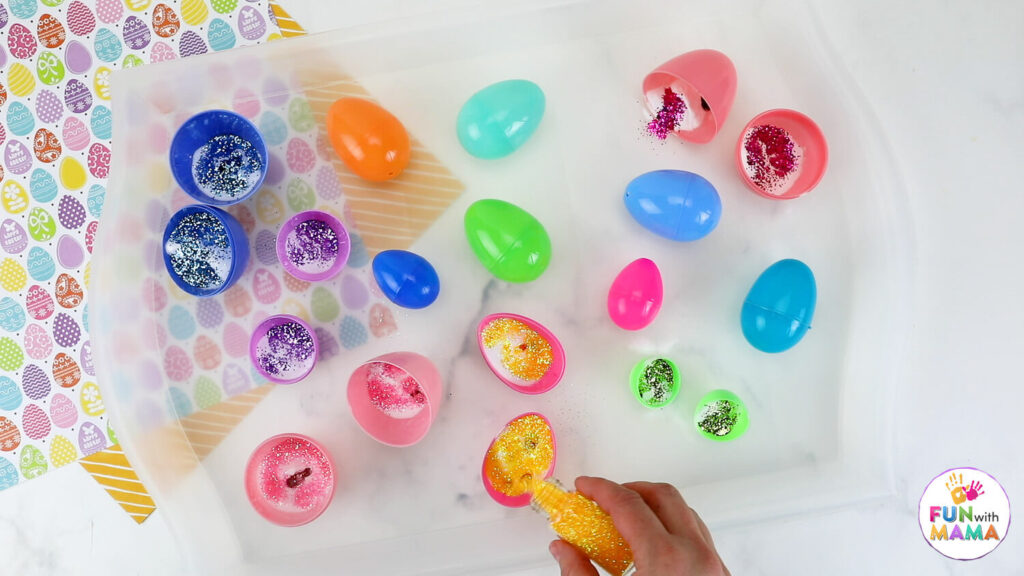
Add a sprinkle of glitter to make the experiment more exciting and magical. Adding glitter is totally optional and this part can be skipped.
STEP 4: Pour vinegar on the baking soda mixture

Now it’s time for the fun part! Add vinegar into a plastic squeeze bottle and pour it onto the baking soda mixture.
Another fun alternative is to add vinegar to a small bowl and use a dropper.
Tip: If completing this activity with a few kids, give each child a single egg and a small bowl of vinegar. Keep a bowl or plastic cup of vinegar on the side to re-fill the bottles as needed.
STEP 5: Observation and Results
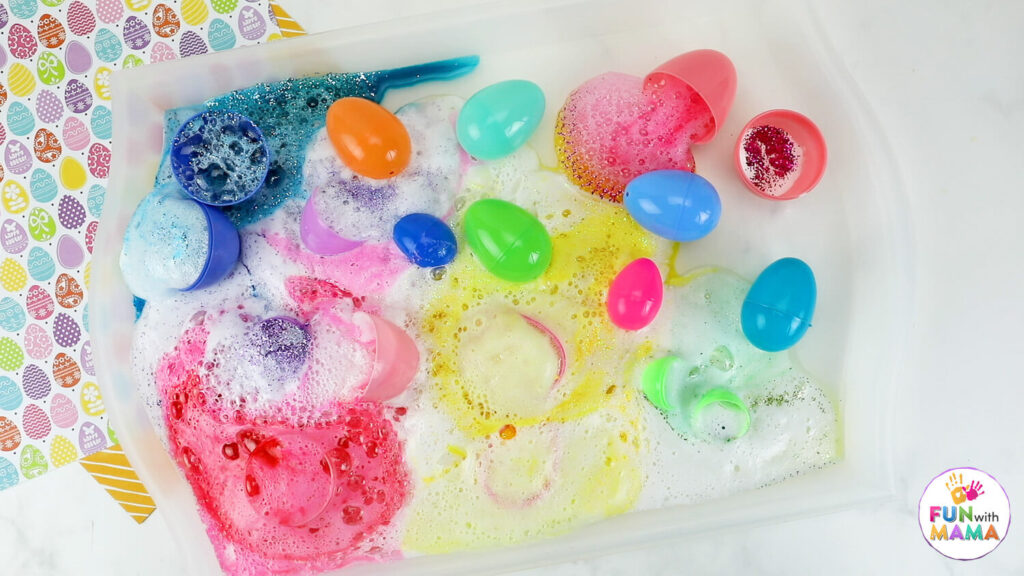
The kids will be able to observe the fizzing which is the end result of the chemical reaction.
Different colors and ratios of food coloring mean that each child’s experiment will look unique.
Baking Soda and Vinegar Tips
- Add dish soap or dishwashing liquid to create more foam and to slow down the reaction.
- Use lemon juice if you don’t have vinegar on hand or don’t like the smell of vinegar.
- If you don’t have plastic eggs, you can use ANY mold or container.
- If you have a large group of kids, I suggest distributing one plastic egg and dropper or plastic bottle per child. The kids could also pair up for this activity. Another option is to do this as a demo but an interactive experiment is always the best!
- Use droppers and squeeze bottles to engage and develop fine motor skills. They can also just pour vinegar from a cup but these are more stimulating!
EASTER SCIENCE AND ACTIVITIES
Many science-based activities incorporate eggs making Easter the perfect time to test these experiments! Here are our popular easter science activities and other favorite recommendations:
- Easy Egg in Vinegar Experiment
- Free Easter Bingo
- Fizzing Easter Egg Dyeing
- Stained Glass Egg Suncatcher Craft
- Easter Printable Activities Pack
More Science Experiments
Science made easy! Check it out:
- Ever wanted to make Raisins dance? Here’s a Dancing Raisins Experiment- Fun Science for Kids!
- Have a car fanatic at home or in class? Try this Easy Balloon Car Project
- Teaching the states of matter? Learn How To Make Oobleck Recipe – Non Newtonian Fluid
- Completing a spring or butterfly unit? Check out this Fizzing Baking Soda + Vinegar Butterfly Cocoons





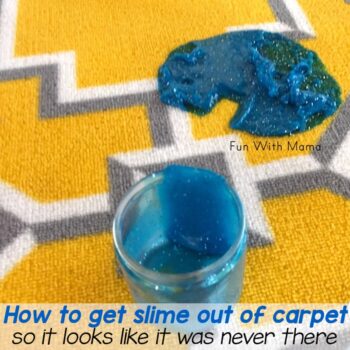



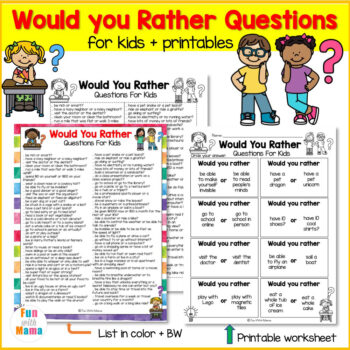


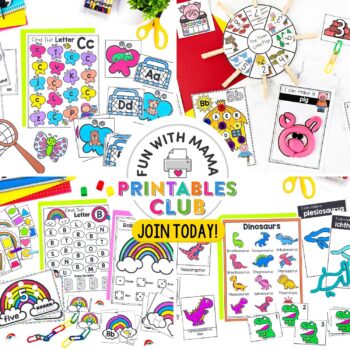



Leave a Comment